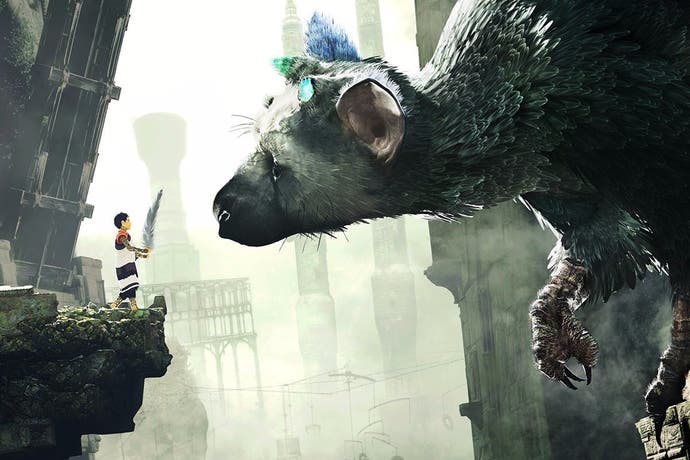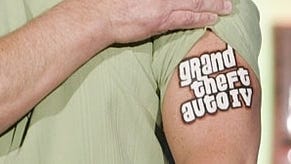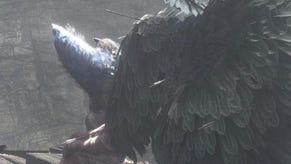The Last Guardian: the first 40 minutes
It's real, it has a release date, and we've played it.
It felt surreal to sit down to play The Last Guardian, a game in development for so long I had started to wonder if I had imagined its existence.
Here we have a game that was announced what feels like a lifetime ago for a console we've all left behind. Back then, The Last Guardian felt exciting, it felt important, and it felt like it would take PlayStation 3 to new heights.
Now, on PS4, The Last Guardian feels like a remaster of an old PS3 game. The visuals, while retaining that trademark washed-out palette of predecessors Ico and Shadow of the Colossus, fail to impress as they did on PS3, despite the odd animation flourish from the unnamed boy you play as and Trico, the giant cat-eagle you spend the game's opening 40 minutes helping out of a cave.
And yet, despite The Last Guardian looking like Sony has papered over the cracks of a last-gen game, it struggles. The controls are fiddly and unresponsive, and the camera is a constant thorn in your side. After you find a mysterious shield, you can use it to project a beam of light that triggers and directs a lightning bolt that shoots from Trico's tail. This is used for puzzle solving in the game's opening, but it feels cumbersome in such an enclosed environment with a camera that refuses to play ball.
And those controls. Creator Fumito Ueda has a penchant for dropping players into a mysterious environment and asking them to work things out. That's fine. It's experiential. And that approach here feels fresh in the face of so many modern day games and their often overbearing handholding. But in a post-Uncharted world, in a world where there is an expectation that climbing and moving about in third-person should feel fluid and responsive, The Last Guardian's controls just annoy.
The Last Guardian begins as a boy wakes up in a cave next to a poorly and frightened Trico, who is chained to the floor and crying out in pain from open wounds caused by a couple of broken spears that protrude from his gut and shoulder. The game is narrated by the boy's older self, who describes how he felt about what's happening, as it happens. The boy didn't yet know why he had mysterious black markings on his skin, nor why he woke up in the cave next to a man-eating beast, the narrator explains.
The first 40 minutes of The Last Guardian act as a tutorial of sorts, with simple puzzle-solving and exploration. You do things like chuck barrels of food at Trico, which he gobbles up - but only if you're standing far enough away from him. You do things like pull the spears from his gut - Trico welps in pain and accidentally slams you against the cave wall, knocking you unconscious. And you do things like grab onto his fur, climb up on his back and inch forward toward his chain, finally setting him free.
It's a slow start - deliberately so, I feel. The idea here is, through the process of learning the game's rules and boundaries, you slowly but surely earn Trico's trust. Step one: feed him. Step two, pull the spears from his body. Step three: unlock his chains. All the while, you work out that you can grab onto Trico's fur, call him over to you, and use him to reach up to ledges and destroy blocked paths with the help of his lightning tail attack.
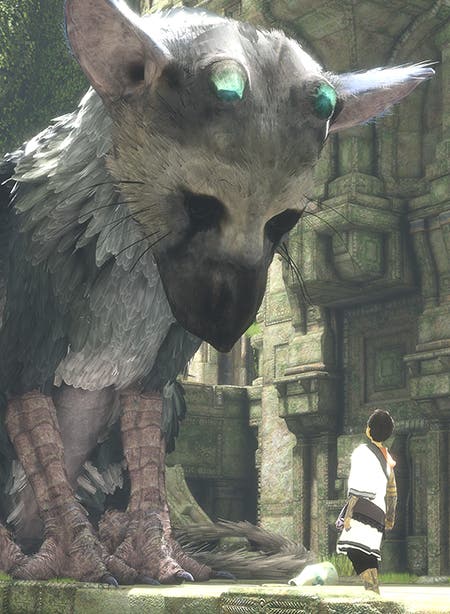
Throughout this, I felt The last Guardian almost - almost! - trigger the response I know it's hoping to trigger: a sense of wonder at the virtual world, a sense of intrigue through its exploration, and an immediate bond with this beautiful yet dangerous beast whom you nurse back to health. I wanted The Last Guardian to do this for me. I really wanted it to, but the controls and camera kept prodding me out of the attempt. Why can't I grab on to this hanging chain? I have to face it, jump then press and hold R1, but the camera won't settle down. Why can't I make this jump? Because the camera's stuck behind Trico's leg. Gah.
I wonder, is this cumbersome feel deliberate? Has Ueda made The Last Guardian feel fiddly, at least in its opening section, in a bid to make the player feel as disoriented as the unnamed boy you control? Here we have a boy who's thrust into working with a dangerous creature whose trust he has yet to earn. And here I am, the player exploring a fantastical, unfamiliar environment, thrust into working with a fiddly control scheme. Maybe I need to earn the game's trust as much as Trico's. Maybe it's all part of Ueda's master plan.
There are worrying technical issues, too. I noticed the demo struggle in the framerate department, and there were more than a few moments where Trico - or a part of Trico - clipped through a wall of a rock or some other piece of the game world. At one point I noticed his chains having a fit as they collided with some mysterious invisible virtual force. For a game due out in a few months, it feels like the developers still have a lot of work to do.
Despite these problems, Trico himself impressed me. A lot. This feathered pastiche of mythical beasts gives The Last Guardian a chance of being something special even though its protracted, troubled development means the game really doesn't have any right to be.
Trico is a computer-controlled construct who seems to have a sense of context. At first he seems distrustful of the boy, and why not? He's chained to the floor, bleeding, tired and hungry. He is battered and bruised, his wings broken and his horns sawed off. Get too close too early in this fledgling relationship and Trico will butt the boy away with his head, snorting as he does so. It appears that Trico is afraid of water, so you end up coercing him down into a watery cave by chucking barrels of food in the water. There are frustrating moments in the opening 40 minutes when you're not sure what you're supposed to do, but Trico helps out, apparently aware of your toil. He'll lower his head or his tail to help you up to new areas. He inches forward on a ledge, seemingly aware of his precarious position, and accidentally knocks a barrel off a cliff.
Trico shrieks and the boy is startled. His older self remembers: "I could tell he didn't mean it."
I agreed. I could tell, too. Remarkably, Trico is an artificial intelligence with a sense of his own - and your - well-being.
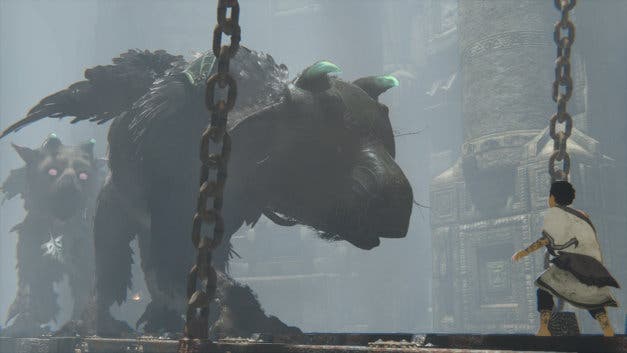
Eventually you make it out of the cave, declaring your intent to return to your village. Trico bursts through the cave wall, as you shout for him to stop following you. The narrator, in that gobbledygook language of Ico and Shadow of Colossus (don't worry, there are subtitles), says the boy didn't know what he had got himself into at that point, didn't know he had found himself in the Den of Beasts. The camera pans, the wind swirls around the canyon, the music ramps up, and a dangerous world lays out before the boy. This is where the demo ends.
40 minutes of play time isn't enough to judge The Last Guardian, of course. Yes, I'm worried about the controls and camera and framerate, but the more I think about my time with the game, the more confident I am of its soul. Still, The Last Guardian faces the perhaps insurmountable task of meeting expectations set by Sony almost a decade ago. Perhaps that's okay. Perhaps it isn't.
Trico, though. I can still hear his heavy breathing, the rumble of his movement somewhere off camera, the fear in his anguish. There's something haunting about Trico's design, his fur dancing in the dark, his eyes burning bright with strange colours one second, menacing pitch black the next - and that black seems to pour down onto his cheeks, as if he's crying.
I suspect if The Last Guardian realises Fumito Ueda's vision, the game will leave some players crying, too.
